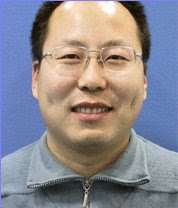Forbidden City

Location: Beijing, China
Ticket price:
From Nov 1 to Mar 31: 40¥ ( 6 US$ Approximately)
From Apr 1 to Oct 31: 60¥ ( 9 US$ Approximately)
Ticket price:
From Nov 1 to Mar 31: 40¥ ( 6 US$ Approximately)
From Apr 1 to Oct 31: 60¥ ( 9 US$ Approximately)
Official website:
Synopsis:
Lying at the center of Beijing, the Forbidden City was the imperial palace during the Ming and Qing dynasties. Now known as the Palace Museum, it is the world’s largest palace complex and covers 74 hectares. Surrounded by a six meter deep moat and a ten meter high wall are 9,999 buildings.
The Forbidden City is divided into two parts. The southern section, or the Outer Court was where the emperor exercised his supreme power over the nation. The northern section, or the Inner Court was where he lived with his royal family. Until 1924 when the last emperor of China was driven from the Inner Court, 14 emperors of the Ming dynasty and 10 emperors of the Qing dynasty had reigned here (from 1420 to 1911).
Having been the imperial palace for some five centuries, it houses numerous rare treasures and curiosities. Listed by UNESCO as a World Cultural Heritage Site in 1987, the Palace Museum is now one of the most popular tourist attractions world wide.
Main scenic spots:
1. Meridian Gate
2. Five-Phoenix Towers
3. the Hall of Supreme Harmony
4. the Hall of Complete Harmony
5. the Hall of Preserving Harmony
6. the Palace of Heavenly Purity
7. the Hall of Union
8. the Palace of Earthly Tranquility
Lying at the center of Beijing, the Forbidden City was the imperial palace during the Ming and Qing dynasties. Now known as the Palace Museum, it is the world’s largest palace complex and covers 74 hectares. Surrounded by a six meter deep moat and a ten meter high wall are 9,999 buildings.
The Forbidden City is divided into two parts. The southern section, or the Outer Court was where the emperor exercised his supreme power over the nation. The northern section, or the Inner Court was where he lived with his royal family. Until 1924 when the last emperor of China was driven from the Inner Court, 14 emperors of the Ming dynasty and 10 emperors of the Qing dynasty had reigned here (from 1420 to 1911).
Having been the imperial palace for some five centuries, it houses numerous rare treasures and curiosities. Listed by UNESCO as a World Cultural Heritage Site in 1987, the Palace Museum is now one of the most popular tourist attractions world wide.
Main scenic spots:
1. Meridian Gate
2. Five-Phoenix Towers
3. the Hall of Supreme Harmony
4. the Hall of Complete Harmony
5. the Hall of Preserving Harmony
6. the Palace of Heavenly Purity
7. the Hall of Union
8. the Palace of Earthly Tranquility
 Legends & Stories:
Legends & Stories:It is believed that the Forbidden City (also called Purple Forbidden City, or Zi Jin Cheng with Chinese) got its name from astronomy folklore.
The ancient astronomers divided the constellations into groups and centered them around the North Star (named Ziwei Yuan in China). The constellation containing the North Star was called the Constellation of Heavenly God and star itself was called the purple palace. Because the emperor was supposedly the son of the heavenly gods, his central and dominant position would be further highlighted the use of the word purple in the name of his residence.
The last Qing emperor Puyi assumed the throne in 1908, at the age of three, His father carried him to the throne. At the start of the coronation, the sudden drum-beating and loud music caught the young emperor unprepared. He was so scared that he kept crying and shouting, “I don't want to stay here. I want to go home.” His father tried to soothe him, saying, “It'll all soon be finished. It'll all soon be finished.” The ministers present at the event considered this incident inauspicious. Coincidentally, the Qing dynasty collapsed three years later and there with concluded China’s feudal system that had lasted for more than 2,000 years.

1 comment:
http://www.beyondspaceandtime.org/FCBSTWeb/web/index.html
The Forbidden City: Beyond Space and Time is a partnership between the Palace Museum and IBM. The goal of the project is to provide the means for a world-wide audience to celebrate and explore aspects of Chinese culture and history.
You can use this website to learn more about the project, or click the button below to visit the Download page where you can view the requirements for experiencing the Virtual Forbidden City.
If you register to join the Beyond Space and Time community you will be able to participate in forum discussion and gain access to enhanced features in the Virtual Forbidden City.
Post a Comment